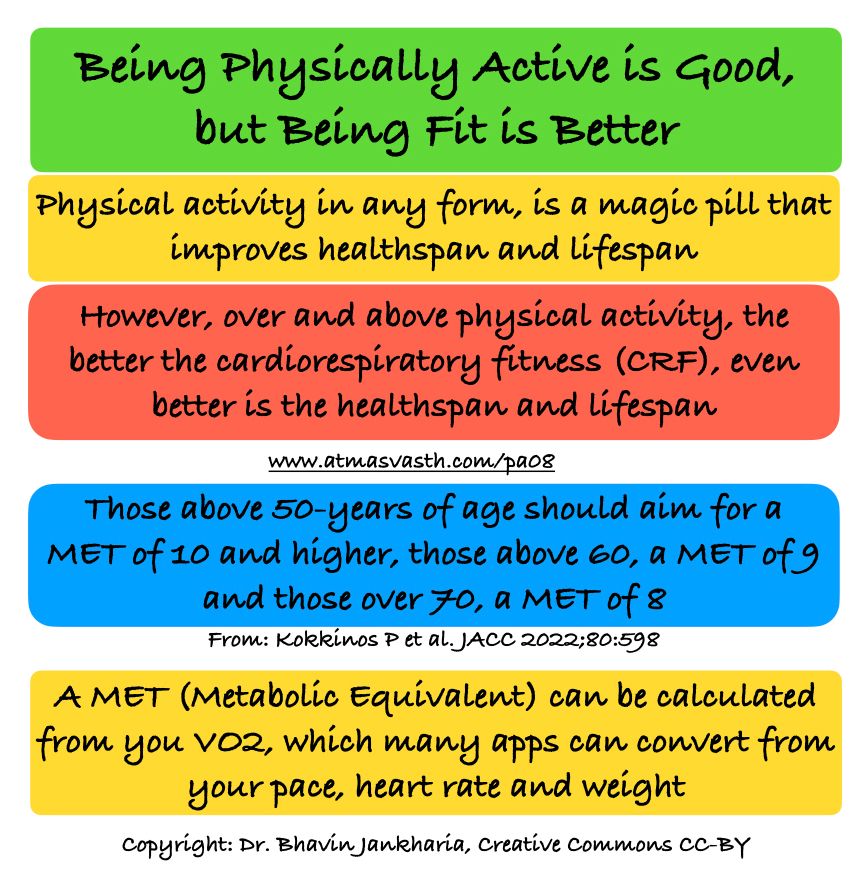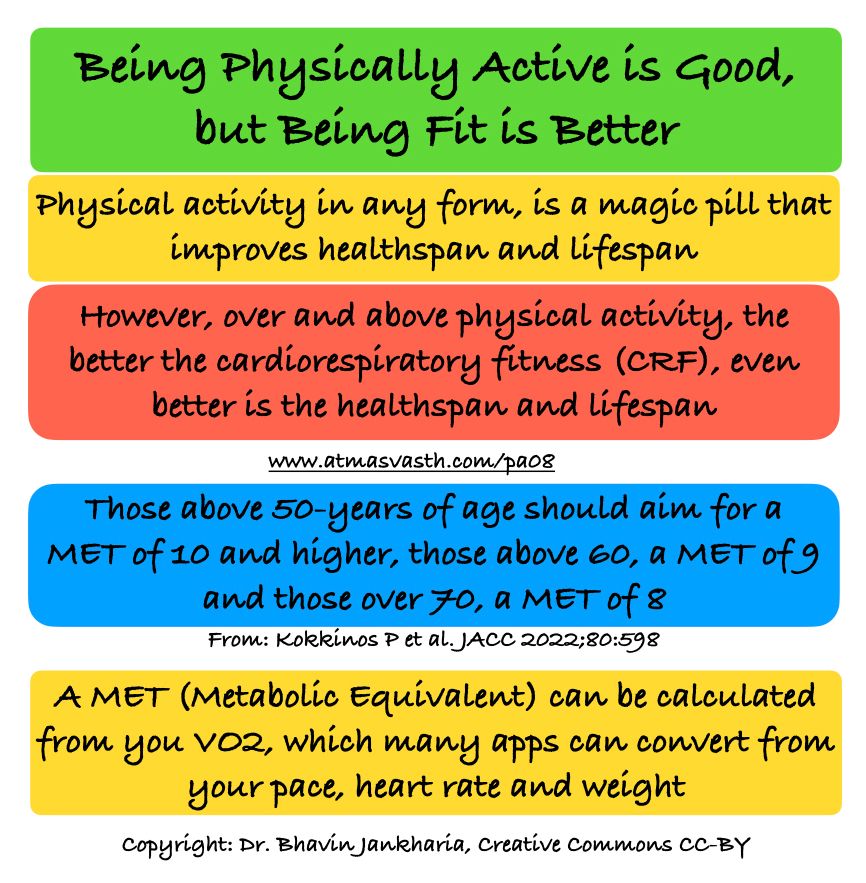Being Physically Active is Good, But Being Fit is Better
While any physical activity is better than none, the fitter you are, the better it is

Physical activity in any form, whether it is walking, running, yoga or strength training…saves lives and improves healthspan and lifespan. Along with the food you eat, physical activity has a direct bearing on how well you will live as you grow older. The more active you are, not only do you live longer, you also live healthier with less cognitive loss and with better control over your blood pressure and blood sugar. You can also offset the ill-effects of poor sleep if you are active and while physical activity does not directly help with weight loss, being active can significantly offset potential downsides of a higher BMI [1].
Just 4000 steps a day or walking at a reasonable pace for 30-45 minutes reduces your risk of death and disease compared to those who are sedentary, or if you were to be sedentary, and while any physical activity is better than none, it is good to add an additional layer of “fitness” to your physical activity. The fitter you are, the better is the health benefit across all ages, sexes and races.
A recent study by Peter Kokkinos and colleagues [2] looked at 750,302 United States veterans from 30-90 years of age to see the correlation between cardiorespiratory fitness (CRF) and all-cause and cardiovascular mortality. Their CRF assessment was expressed as peak METS (metabolic equivalents) achieved on an exercise treadmill test, done once, at the start of the study. The subjects were then followed up for an average of 10 years.
The authors found that those who achieved 14 METs (highly fit) lived 6.0 (men) and 6.7 (women) years longer than those who were unfit (less than 4 METs). To achieve a 50% risk reduction compared to the least fit individuals, those in the 50-59 years age group needed a MET of 9.8 while it was 8.1 for those between 60-69 and 70-79 years of age and 7.0 for those between 80 and 95 years of age. At any age, the higher the CRF in the study, the better was the healthspan and lifespan.
At 57, my VO2 max during a run comes to around 37 ml/kg.min, which (divided by 3.5) gives me a MET of 10.5, which makes me fit, but not highly fit (> 12 METs). The VO2 max is best calculated with actual O2 usage during exercise, but this is not easy to do and formulae that convert your pace, your weight and heart rate into an approximate VO2 are acceptable. The Apple Watch uses an algorithm that directly gives the VO2 max value in the Health app on the iPhone, which can also be tracked over time.
Our aim should be to reach the “fit” category, which would be > 10 METs for those between 50-59 years of age, > 9 for those between 60-69 and > 8 for those over 70. It is not easy, but it is not difficult and the eventual payoff is worth the effort [3].

In our atmasvasth quest to live long, healthy, while being active is the magic pill we should all be consuming, being fit is what we should aspire to, once the PA pill has become a daily habit.
Footnotes
1. Tucker WJ et al. Exercise for Primary and Secondary Prevention of Cardiovascular Disease: JACC Focus Seminar 1/4. J Am Coll Cardiol. 2022 Sep 13;80(11):1091-1106.
2. Kokkinos P et al. Cardiorespiratory Fitness and Mortality Risk Across the Spectra of Age, Race, and Sex. J Am Coll Cardiol. 2022 Aug 9;80(6):598-609.
3. Kokkinos P et al. Age-specific exercise capacity threshold for mortality risk assessment in male veterans. Circulation. 2014 Aug 19;130(8):653-8.
Atmasvasth Newsletter
Join the newsletter to receive the latest updates in your inbox.


